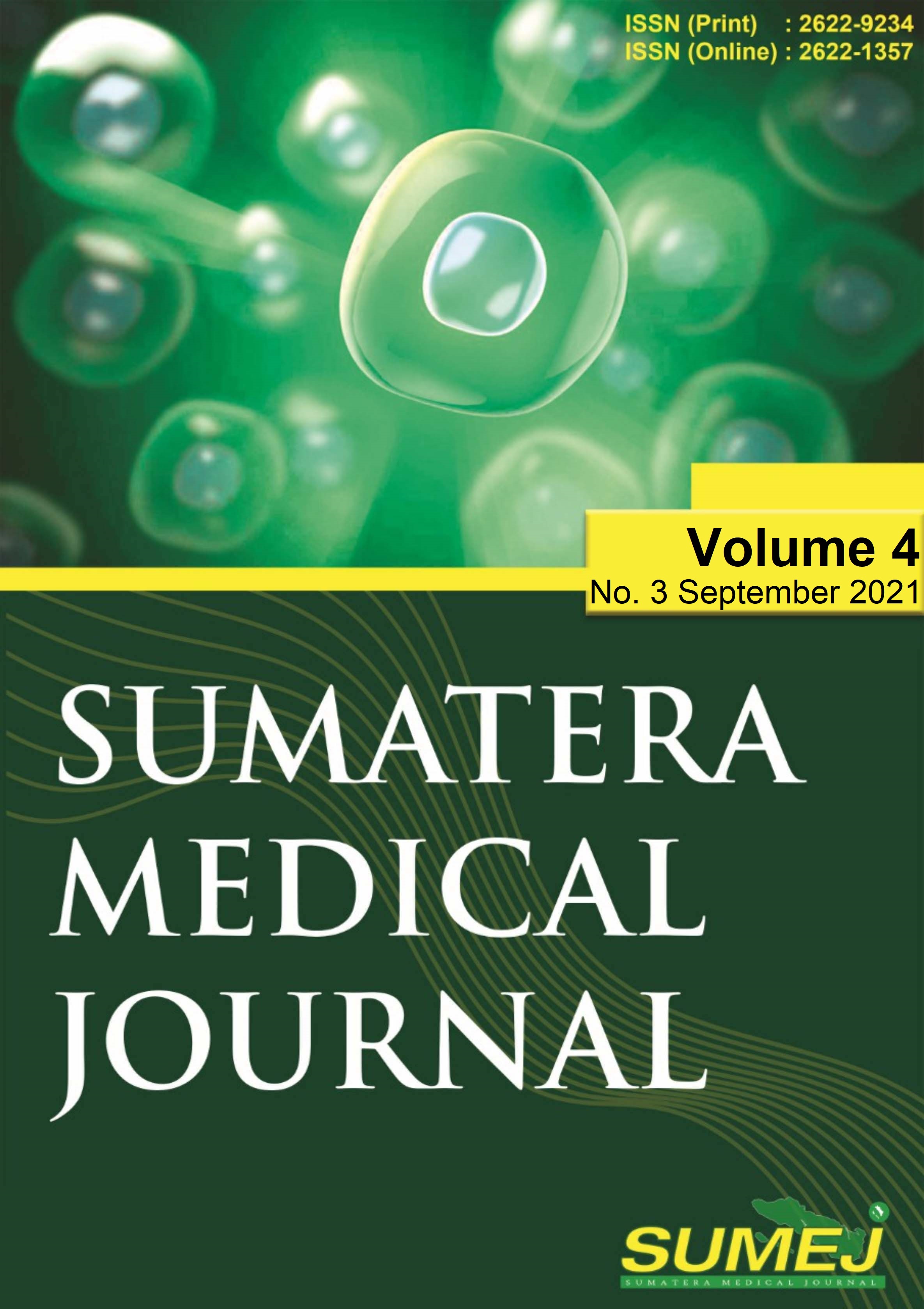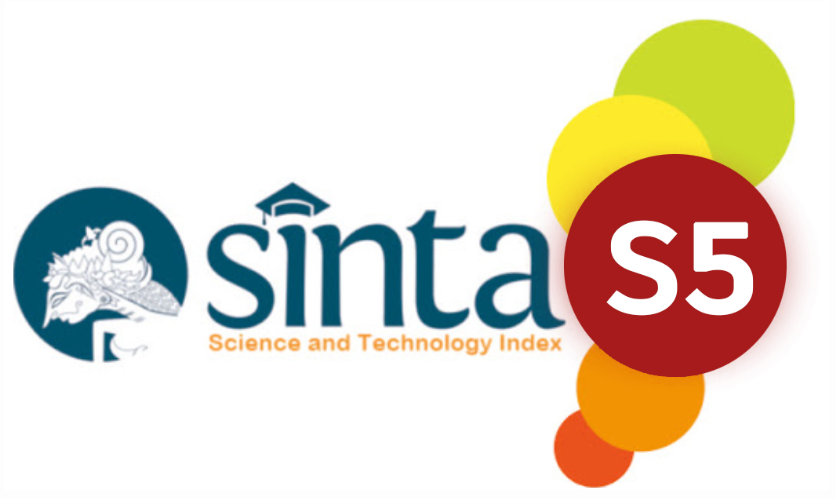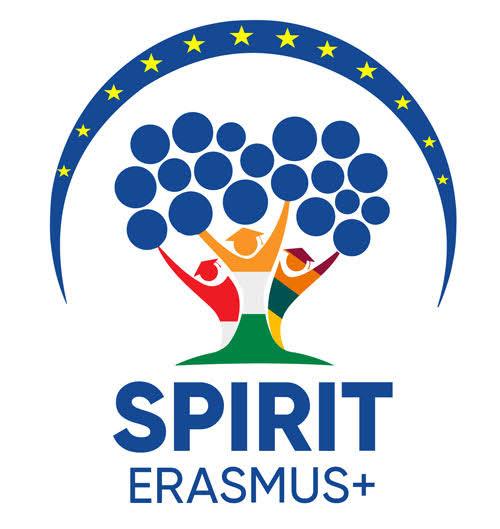Serum 25-Hydroxyvitamin D Levels as a Predictive Factor for Allergic Rhinitis
DOI:
https://doi.org/10.32734/sumej.v4i3.7626Keywords:
Allergic rhinitis, vitamin D, 25-hydroxyvitamin D, allergy, total nasal symptom score, predictive factorAbstract
Introduction: Allergy and 25-Hydroxyvitamin D deficiency were mentioned to be correlated. Still, there was limited number of studies in determining serum 25-Hydroxyvitamin D levels as a predictive factor, particularly in allergic rhinitis (AR). This study has never been implemented in Indonesia which the main objective was to explore this topic. Methods: Consecutive sampling was used in recruiting the fifteen subjects. Serum 25-Hydroxyvitamin D levels were quantified using electrochemiluminescence immunoassay (ECLIA) method while the total nasal symptom scores were acquired by enumerate all nasal symptoms. Data of serum vitamin D levels and TNSS were analysed statistically.Results: Based on our previous study, the predictive value was illustrated from linier regresion = 10,230 – 0,281 (vitamin D), with negative moderate correlation (r = -0,613). This result can be comparable for someone with vitamin D level of 5.66 ng/mL that could predicted as 8.64 nasal score. Conclusion: 25-Hydroxyvitamin D could be a predictive factor for allergic rhinitis with negative moderate correlation. Hence, in the future research needs to be implemented.
Downloads
References
Small. P, Kim. H, “Allergic Rhinitisâ€. Allergy, Asthma & Clin Immunol, vol.14 no. 2 pp. 51. 2018.
Bauchau. V, Durham. S, “Prevalence and Rate of Diagnosis of Allergic Rhinitis in Europeâ€, Eur Respir J, vol. 24, no. 5, pp. 758-64. 2004.
Hodder. M, Tulic. M, Prescott. S, “Algorithmic models to predict allergic disease using multiple neonatal markersâ€, Indian Pediatrics, no. 46, pp291-2. 2009.
Nickolls. C, Campbell. D, “Top 10 food allergy mythsâ€, Journ Ped Child Health, no. 1, pp. 1-5. 2015.
Seidman. M, Gurgel. R, Lin. S, Schwartz. S, Baroody. F, “Clinical Practice Guideline: Allergic Rhinitisâ€. Otolaryngol Head and Neck Surg, vol. 152, no. 1, pp 1-432015. 2015.
Neubauer. P, Lauster. R, Worm. M, Garbe. L, “Vitamin D receptor activation modulates the allergic immune responseâ€, University of medicine, Berlin. 2011.
Hollams. E, Hart. P, Holt. B, Serralha. M, Parson. F, Klerk. N, et al., “Vitamins D and atopy and asthma phenotypes in children: a longitudinal cohort studâ€, Eur Respir J, no.38, pp. 1320-7. 2011.
Arabi. A, Rassi. R, Fuleihan. G, “Hypovitaminosis D in developing countries-prevalence, risk factors and outcomesâ€, Endocrinol, no. 6, pp.550-612010.
Soesanti. F, Pulungan. A, Tridjaja. B, Batubara. J, “Vitamin D profile in healthy children aged 7-12 years old in Indonesiaâ€, Int J Pediatr Endocrinol, pp 167. 2013.
Modh. D, Katarkar. A, Thakkar. B, Jain. A, Shah. P, Joshi. K, “Role of Vitamin D Supplementation in Allergic Rhinitisâ€. Indian Journal of Allergy, vol. 28, no. 1, pp 35-9. 2014.
Bousquet. J, Khaltaev. N, Cruz. A, Denburg. J, Fokkens. W, Togias. A, et al., “Allergic Rinitis and its Impact on Asthma (ARIA) 2008 Update (in Collaboration with the World Health Organization)â€. Journal Allergy. Vol. 63, no. 86, pp. 8–160. 2008.
Yalcinkaya. E, Tunckasik. M, Guler. I, Kocaturk. S, Gunduz. O, “Evaluation of The Correlation of 25-hydroxyvitamin-D Serum Levels with Allergic Rhinitisâ€. ENT Updates, vol. 5, no. 1, pp. 19-22. 2015.
Milovanovic. M, Heine. G, Hallatschek. W, Opitz. B, Radburch. A, Worm. M, “Vitamin D receptor binds to the ε germline gene promotor and exhibits transrepressive activityâ€, J Allergy Clin Immunol, vol. 126, no. 5, pp. 1016-23. 2010.
Yip. K, Kolesnikoff. N, Yu. C, Hauschild. N, Taing. H, “Mechanisms of Vitamin D3 Metabolite Repression of IgE-Dependent Mast Cell Activationâ€. J Allergy Clin Immunol, vol. 133, no. 5, pp. 1356-64. 2014.
Vasiliou. J, Lui. S, Chohan. V, Xystrakis. E, Bush. A, Hawrylowicz. C, “Vitamin D Deficiency Induces Th2 Skewing and Eosinophilia in Neonatal Allergic Airways Diseaseâ€, Allergy, vol. 69, no. 5, pp. 1380-9. 2014.
Lange. N, Litonjua. A, Hawrylowicz. C, Weiss. S, “Vitamin D, the Immune System and Asthmaâ€, Expert Rev Clin Immunol, vol. 95, no. 6, 693-702. 2009.
Hulley. S, Cummings. S, Browner. W, Grady. D, Newman. T, “Designing Cross-Sectional and Case-Control Studiesâ€. In: Hulley S, eds. Designing Clinical Research, 3th edition, Philadelphia: Lippincott Williams & Wilkins, pp. 109-25, 2007.
Lucock. M, Jones. P, Martin. C, Hons. B, Beckett. E, Yates. Z, et al., “Vitamin D: Beyond Metabolismâ€, Evidence-Based Complementary & Alternative Medicine, vol. 20, no. 4, pp. 310-22. 2015.
Cheng. H, Kim. S, Park. G, Chang. S, Bang. S, Won. C, et al., “Low Vitamin D Levels are Associated with Atopic Dermatitis, but Not Allergic Rhinitis, Asthma, or IgE Sensitization, in the Adult Korean Populationâ€. J Allergy Clin Immunol, vol. 133, no. 4, pp. 1048-55. 2014.
Restimulia. L, Pawarti. D, Mayaguyang. H., “The Relationship between Serum Vitamin D Levels with Allergic Rhinitis Incidence and Total Nasal Symptom Score in Allergic Rhinitis Patientsâ€, Open Acces Med J Med Sci, vol. 6, no. 8, pp. 1405-09. 2018.
Thakkar. B, Katarkar. A, Modh. D, Jain. A, Shah. P, Joshi. K, “Deficiency of Vitamin D in Allergic-Rhinitis: a Possible Factor in Multifactorial Diseaseâ€, J Clin Rhinol, vol. 7, no. 3, pp. 112-6. 2014.
Mulligan. J, White. D, Wang. E, Sansoni. S, Moses. H, Yawn. R., et al., “Vitamin D3 Deficiency Increases Sinus Mucosa Dentritic Cells in Pediatric Chronic Rhinosinusitis with Nasal Polypsâ€, Otolaryngol Head Neck Surg, vol. 147, no. 4, pp. 773-81. 2012.
Hypponen. E, Berry. D, Wjst. M, Power. C, “Serum 25-Hydroxyvitamin D and IgE-a Significant but Nonlinier relationshipâ€, Allergy, no. 64, pp. 613-20. 2009.
Downloads
Published
How to Cite
Issue
Section
License
Copyright (c) 2021 Sumatera Medical Journal

This work is licensed under a Creative Commons Attribution-NonCommercial-NoDerivatives 4.0 International License.
The Authors submitting a manuscript do so on the understanding that if accepted for publication, copyright of the article shall be assigned to Sumatera Medical Journal (SUMEJ) and Faculty of Medicine as well as TALENTA Publisher Universitas Sumatera Utara as publisher of the journal.
Copyright encompasses exclusive rights to reproduce and deliver the article in all form and media. The reproduction of any part of this journal, its storage in databases and its transmission by any form or media, will be allowed only with a written permission from Sumatera Medical Journal (SUMEJ).
The Copyright Transfer Form can be downloaded here.
The copyright form should be signed originally and sent to the Editorial Office in the form of original mail or scanned document.











